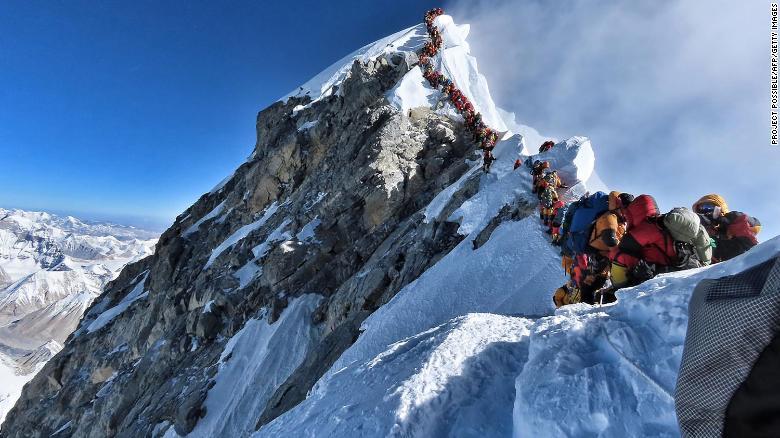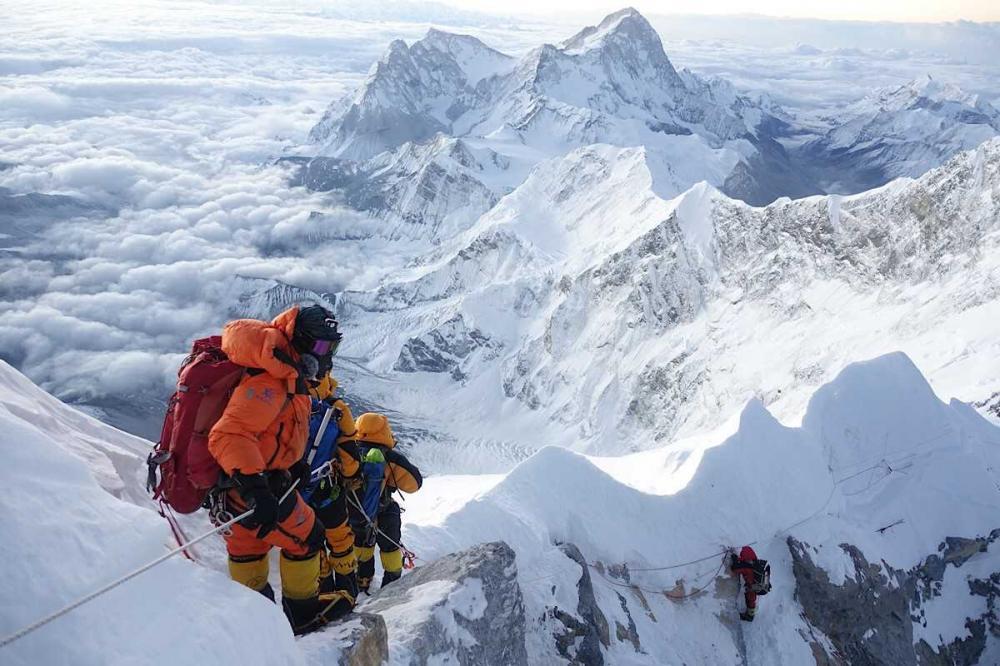CNN has published a shocking image of crowds of climbers stuck in a queue leading up to the summit of Mount Everest, the world’s highest peak, after it was reported that an American climber died this week. At least eight have died during the spring climbing season thus far amid reports that hundreds of climbers have faced “traffic jams” near the peak at Everest’s most dangerous point, called “the death zone”.
A 55-year old American mountaineer named Donald Lynn Cash died after fainting from high altitude sickness while descending the summit, and another, Indian climber Anjali Kulkarni also died. According to CNN, which spoke to Kulkarni’s family, she had been stuck in a long line above camp four, just before the summit, which sits at a dangerous 8,000 meters (26,247 feet) above sea level, where climbers face oxygen deprivation and threat of severe altitude sickness.

The CNN report attributed both of their deaths to the back-up of crowds of climbers stuck near the top, which some local officials have denied.
One report has estimated that between five and 10 climbers die on Mt. Everest each year, which means already this year the death toll could be headed for record highs.
The image showing the climber traffic jam was described as follows:
Climber Nirmal Purja posted a picture on Instagram of the heavy human traffic on the mountain Wednesday, showing a dense trail of climbers huddling on an exposed ridge to the summit. He added that there were roughly 320 people in the queue to the top of the mountain in an area known as the “death zone.”
The small window of opportunity to beat inclement weather this year may be contributing to the deadly traffic jams at the top. “The weather has not been very great this climbing season, so when there is a small window when the weather clears up, climbers make the move,” Danduraj Ghimire, director general of Nepal’s Tourism Department, said.
“On May 22, after several days of bad weather, there was a small window of clear weather, when more than 200 mountaineers ascended Everest. The main cause of deaths on Everest has been high altitude sickness which is what happened with most of the climbers who lost their lives this season as well,” he added.
A separate report noted that on Thursday alone, over 120 people made it to the summit. “More than 120 climbers scaled Everest on Thursday, but some of them were caught in the crowd of people on the slopes, leading to exhaustion, dehydration and death, Nepali officials said Friday,” according to the report.
This means that multiple hundreds were simultaneously scrambling to the summit during the same small 2-day window of time — not counting others at lower sections of the mountain.

The trek is so dangerous, and the threat of severe oxygen deprivation so ever present, that most often climbers who lose their lives at the upper levels of the mountain can’t be safely retrieved, and are simply “buried” by layers of snow and ice.
As a BBC reported noted earlier this year, nearly 300 climbers total have died on the mountain since the 1920s, two-thirds of which are still buried on the side of the mountain.
via ZeroHedge News http://bit.ly/2W2ty60 Tyler Durden